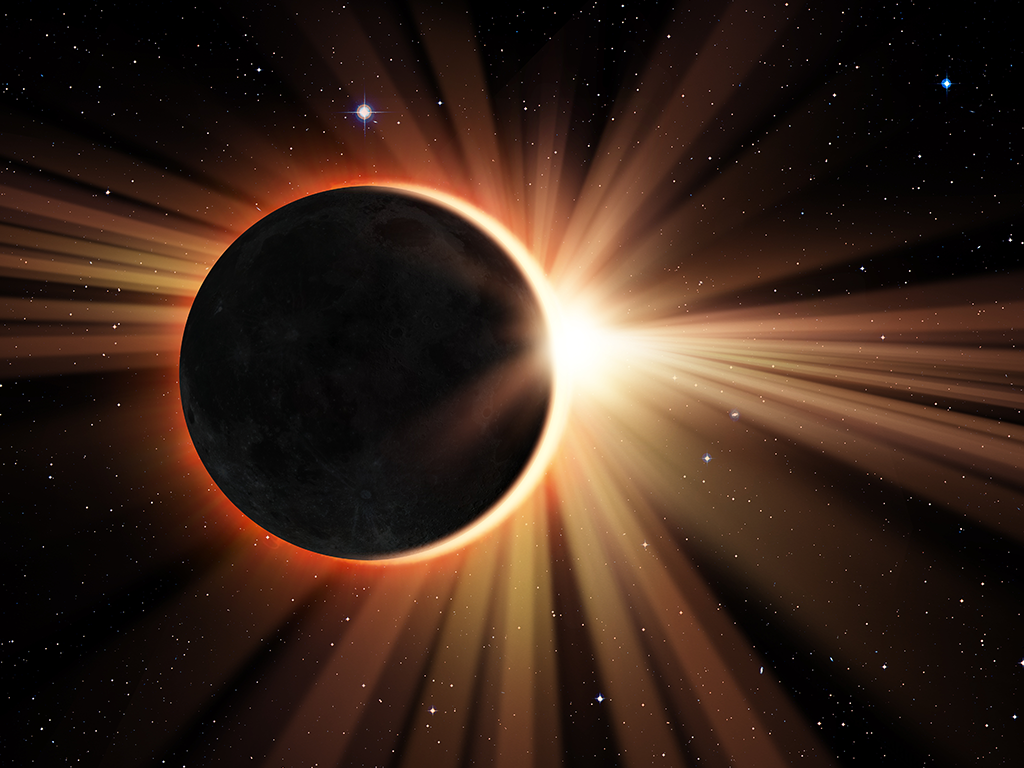Monday’s solar eclipse In Aggieland: What to expect and why it matters

muratart/shutterstock.com
On April 8, parts of Texas will be bathed in shadows as millions of people across North America experience the longest and darkest total solar eclipse since the early 19th century.
A solar eclipse occurs when the moon passes in front of the sun from the perspective of people on Earth, temporarily leaving the planet in shadows. The size of the moon and its distance from the Earth allows it to sometimes cover the face of the sun entirely, creating a total solar eclipse, much like the one many Texans will be treated to on Monday.
When the sun is completely covered by the moon, it is considered totality. However, because the moon is just barely large enough to cover the entirety of the sun, only a small path on Earth’s surface roughly 100 miles wide will be within the path of totality. In addition, onlookers will only get to experience a few minutes inside the darkest part of the moon’s shadow, says Dr. Justin Spilker, an assistant professor in the Department of Physics and Astronomy at Texas A&M University and a member of the George P. and Cynthia Woods Mitchell Institute for Fundamental Physics and Astronomy.
“During those precious few minutes of totality, you can look at the sun without any protective gear, and you’ll be able to see the sun’s thin outer atmosphere, the corona, with your unaided eyes,” Spilker said. “The sun’s corona is incredibly beautiful on its own, and you’ll also be able to see other stars and planets, even though it’s the middle of the day.”
In Texas, the eclipse will begin just after noon and end after 3 p.m., Spilker says. Despite the midday occurrence, he notes, the horizon will mimic the colors of sunset, and birds will roost as if it is nighttime, while the air will also become noticeably cooler.
“Then, a few minutes later, the sun will start peeking out from behind the moon again, and the fleeting moment will be gone,” Spilker added. “It will take another few hours for the moon to completely unblock the sun.”
Although Bryan-College Station is not within the eclipse’s path of totality, cities such as Eagle Pass, Uvalde, Kerrville, northwest San Antonio, most of Austin, Waco and the majority of the Dallas/Fort Worth Metroplex are, along with many smaller towns, Spilker says.
“I highly recommend traveling to be inside the path of totality,” Spilker added. “I promise you it will be worth it, and you will remember those few minutes for a lifetime. Seeing a total solar eclipse with your own eyes is one of the most spectacular sights that nature offers, period.”

